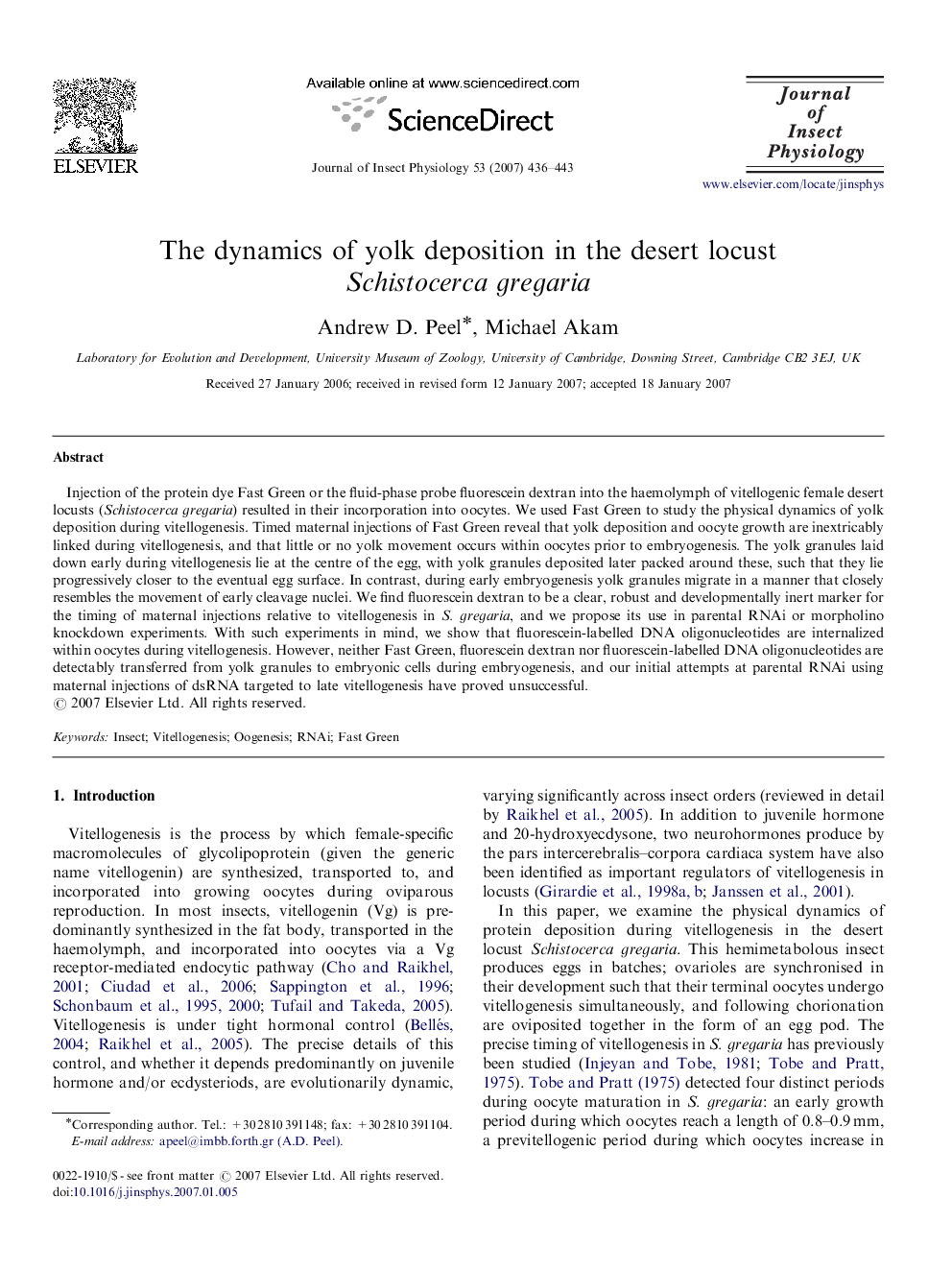| Article ID | Journal | Published Year | Pages | File Type |
|---|---|---|---|---|
| 2841610 | Journal of Insect Physiology | 2007 | 8 Pages |
Injection of the protein dye Fast Green or the fluid-phase probe fluorescein dextran into the haemolymph of vitellogenic female desert locusts (Schistocerca gregaria) resulted in their incorporation into oocytes. We used Fast Green to study the physical dynamics of yolk deposition during vitellogenesis. Timed maternal injections of Fast Green reveal that yolk deposition and oocyte growth are inextricably linked during vitellogenesis, and that little or no yolk movement occurs within oocytes prior to embryogenesis. The yolk granules laid down early during vitellogenesis lie at the centre of the egg, with yolk granules deposited later packed around these, such that they lie progressively closer to the eventual egg surface. In contrast, during early embryogenesis yolk granules migrate in a manner that closely resembles the movement of early cleavage nuclei. We find fluorescein dextran to be a clear, robust and developmentally inert marker for the timing of maternal injections relative to vitellogenesis in S. gregaria, and we propose its use in parental RNAi or morpholino knockdown experiments. With such experiments in mind, we show that fluorescein-labelled DNA oligonucleotides are internalized within oocytes during vitellogenesis. However, neither Fast Green, fluorescein dextran nor fluorescein-labelled DNA oligonucleotides are detectably transferred from yolk granules to embryonic cells during embryogenesis, and our initial attempts at parental RNAi using maternal injections of dsRNA targeted to late vitellogenesis have proved unsuccessful.
